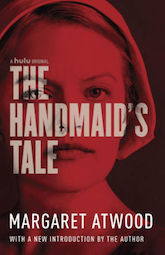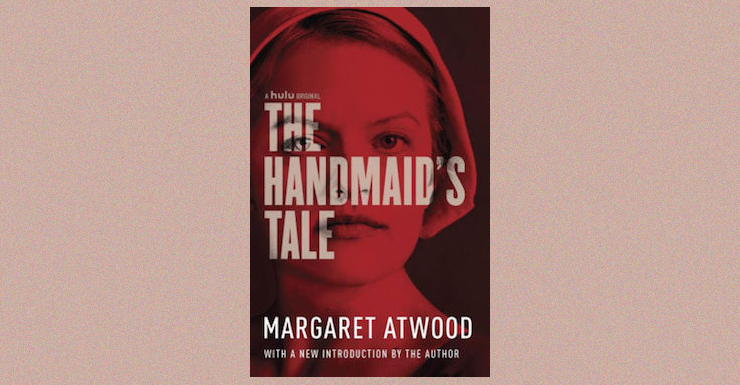Margaret Atwood’s The Handmaid’s Tale is one of my favorite books of all time. I could go on and on about her uncanny descriptive abilities, the precision in her word choice, or her storytelling chops. I probably would run out of space before I even had the chance to mention how much I admire the way she imbues deceptively simple prose with morally complex political overtones.
But, as much as I could fill this piece with my adoration for the story itself, I’m here to say that I found her new 2017 introduction uniquely compelling. In particular, I believe that her concerns about writing speculative fiction and the way she addresses these concerns are enlightening.
In the introduction, Atwood tells us that she established a series of rules to tackle her fear that she would fall victim to the usual tropes and trappings of the speculative fiction genre. The rules she established, and more importantly the manner in which she embraced a rule-centered writing process, should inform any writer’s process.
Atwood explains that she put off writing The Handmaid’s Tale for a year or two because writing speculative fiction seemed like a “risky venture.” Atwood describes the risks:
I’d read extensively in science fiction, speculative fiction, utopias and dystopias ever since my high school years in the 1950s, but I’d never written such a book. Was I up to it? The form was strewn with pitfalls, among them a tendency to sermonize, a veering into allegory and a lack of plausibility.
She then goes on to explain the rules she put in place prior to writing The Handmaid’s Tale—rules designed to help her avoid the pitfalls that concerned her most.
If I was to create an imaginary garden I wanted the toads in it to be real. One of my rules was that I would not put any events into the book that had not already happened in what James Joyce called the “nightmare” of history, nor any technology not already available. No imaginary gizmos, no imaginary laws, no imaginary atrocities. God is in the details, they say. So is the Devil.
Much like the prose in The Handmaid’s Tale itself, the rules in the introduction are terse but packed with meaning. Atwood wanted to confine herself using history, realism, and pragmatism as her key parameters. The specific writing prohibitions are clearly delineated—no sermonizing, no allegories, no implausibility, no ahistorical premises, no fantastical laws or atrocities, and no new technologies or gizmos. But the implications of these itemized rules extend far beyond any specific delineation.
Atwood was setting the broad boundaries for how she would construct her political system, how she would craft the social interactions between characters, and how she would control the overall setting. It wasn’t just that there would be no fancy gizmos or ahistorical premises. It was that in her imaginary garden she insisted that her toads be real. The nuts and bolts of her entire imaginary world needed to closely adhere to the history, traditions, and social and economic hierarchies of Western civilization, principally America’s biblical and puritanical roots. This conceptual framework allowed her to overcome her concerns.
Buy the Book


The Handmaid’s Tale
I think it’s important to note that even a writer as brilliant and brimming with imagination as Margaret Atwood needed rules to overcome her apprehension. But we should also recognize that these particular rules were tailor made for her. Surely Suzanne Collins’ imaginary garden would have a different set of toads and a different set of rules.
In writing my first novel, a dystopian novel like The Handmaid’s Tale, I didn’t have the benefit of reading Atwood’s introduction. I only recently came across the new introduction in rereading the latest edition of her novel. But for my next novel, I will most assuredly craft a set of Atwoodian rules to guide me. As a speculative fiction writer, many of Atwood’s specific rules appeal to me. But again, rather than the specifics, it’s her process that should appeal to any writer.
Atwood’s introduction teaches writers to: (i) identify their concerns, (ii) establish specific rules to overcome these concerns, and (iii) create a conceptual framework to guide larger decisions about setting. In creating imaginary gardens, writers are free to fashion toads of their choosing. Unlike Atwood’s toads, they may create unnaturally strange, artificial, or unrealistically whimsical toads. But whatever they choose, writers should create specific rules and conceptual frameworks that help them overcome their initial concerns.
 Jay Schiffman is a writer and entrepreneur committed to creating socially responsible businesses. Prior to starting his businesses, he was a practicing attorney, taught political science at NYU, and worked in the public and private sectors. He lives in New Jersey with his wife and children. Game of the Gods is his debut novel.
Jay Schiffman is a writer and entrepreneur committed to creating socially responsible businesses. Prior to starting his businesses, he was a practicing attorney, taught political science at NYU, and worked in the public and private sectors. He lives in New Jersey with his wife and children. Game of the Gods is his debut novel.










